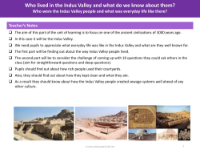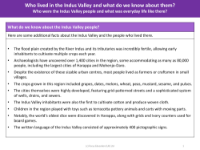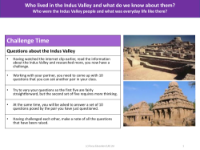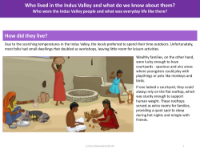Who were the Indus Valley people and what was everyday life like there? - Presentation
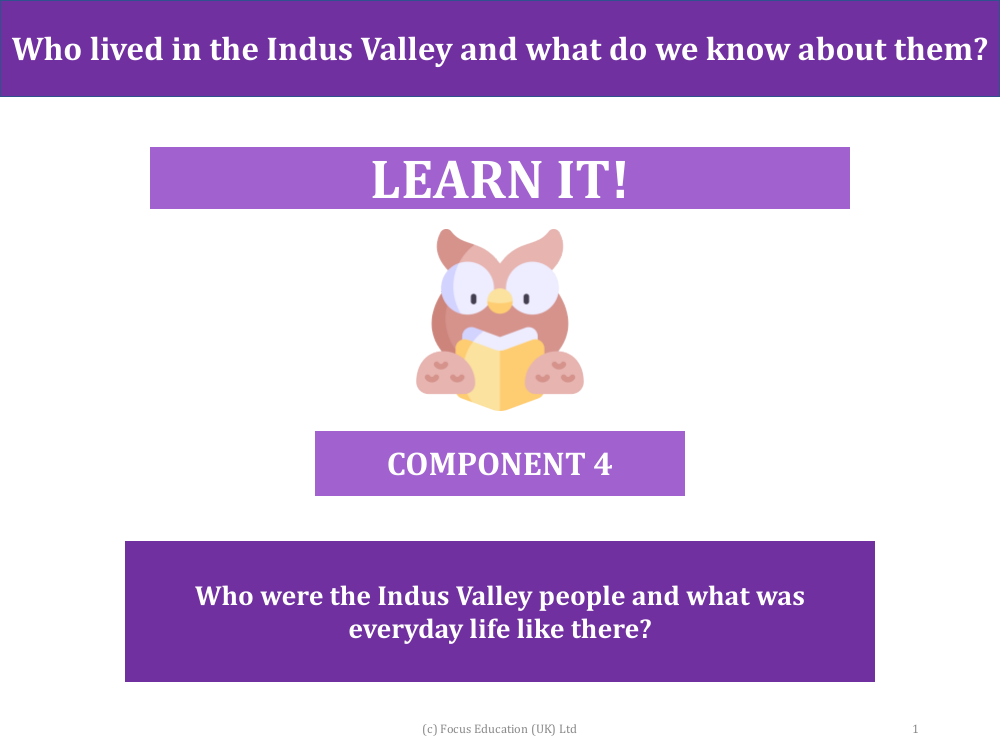
History Resource Description
The Indus Valley civilization, dating back to around 3000 years ago, was a remarkable society known for its advanced urban planning and sophisticated culture. The people who lived there cultivated the fertile flood plains of the River Indus and its tributaries, which enabled them to harvest multiple crops annually. While many of the over 1,400 unearthed cities, like Harappa and Mohenjo-Daro, were quite large, most Indus Valley inhabitants lived as farmers or craftsmen in smaller villages. They grew a variety of crops such as wheat, peas, and cotton—the latter marking them as the first to produce woven cloth. The cities were meticulously laid out with grid-pattern streets and boasted an impressive infrastructure that included wells, drains, and sewers, showcasing their pioneering approach to sanitation.
Everyday life in the Indus Valley was adapted to the hot climate, with most people spending significant time outdoors. Due to space constraints within their homes, which often served as workshops, the wealthier families enjoyed the luxury of courtyards. These open spaces were not only a place for children to play with toys and pets but also served as a communal area for socializing. For those without courtyards, rooftops provided a retreat for cooler nighttime sleep and interaction with neighbors. Cleanliness was important to the Indus Valley people, evidenced by the central wells for clean water and sophisticated bathroom drainage systems. Their diet was diverse and nutritious, with archaeological findings of animal bones, seafood shells, and fruit seeds indicating a well-balanced intake, although men seemed to have had better access to food resources than women.
